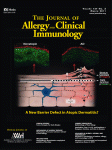
Celiac.com 12/07/2018 - What do hypertension, obesity, smoking and celiac disease have in common? They’re all important risk factors for coronary heart disease (CHD), a disease that kills more than a half a million people annually in the U.S. alone.(1) Based on emerging research, celiac disease may be a major contributor to heart disease in the Western world –making celiac disease an even greater public health threat than is currently understood.
CHD and Celiac Disease: A Brief History
The connection between CHD and celiac disease has a 35-year history. It began with a 1976 study conducted by Southampton University Hospital researchers, who found that there was an “… apparent protective effect of coeliac disease on CHD risk which “…might result from malabsorption of dietary lipids.”(2) However, this study had a number of significant flaws including a small sample size of only seventy seven. The most significant confounder in this study was the mortality rate of young subjects, which precluded them from the privilege of living long enough to develop CHD. Additionally, our understanding of CHD has undergone a paradigm shift since the low-fat 1970’s. CHD is not the result of excess dietary fat consumption, but instead is a manifestation of prolonged inflammation.(3)
Celiac.com Sponsor (A12):
Based on this study and two others published around the same time period which found no link between CHD and celiac disease, researchers largely stopped investigating the heart health of people with celiac disease. The assumption was that celiac disease provided protection or, at the very least, was benign in terms of CHD risk.
Then came a paper published in the July 2003 Archives of Internal Medicine which reported that celiac disease patients had a sixty percent increased risk of CHD death.(4) More recently, in a January 2011 Circulation paper, Swedish researchers published eye-catching results from an investigation of more than 15,000 individuals with celiac disease.(5)
The key finding from this research was an approximately twenty percent increased risk of CHD death in people with celiac disease. While this research remains in its infancy, the biological connections between celiac disease and CHD are crystal clear, bolstering the epidemiological findings that people with celiac disease are at heightened CHD risk.
CHD Today
Before delving into the physiological link between CHD and celiac disease, it’s crucial to understand the pathogenesis of atherosclerosis, or narrowing of the heart’s arteries.
Atherosclerosis begins with an injury to the endothelial lining of the coronary artery. A hyperactive response by immune cells, particularly macrophages and inflammatory cytokines, causes macrophage cells to become lodged inside the injured endothelium. Through a complex cascade of cell signaling, “trapped” macrophages transform into what are known as foam cells. These foam cells take in circulating blood lipids, especially low density lipoproteins (LDL). Over time this LDL/foam cell mishmash transforms into the arterial plaque most people are familiar with.(6)
Inflammation fuels atherosclerosis from start to finish –from the initial injury to the development and accumulation of plaque.
The Inflammation Connection
Unfortunately, inflammation is something that people with celiac disease have more than enough of. Serum C-reactive protein (CRP) is a commonly used parameter for celiac disease diagnoses –suggesting that nearly all uncontrolled celiac disease patients have elevated inflammation levels.(7)
CRP also happens to be a more sensitive indicator of impending heart disease risk than serum cholesterol. Cleveland Clinic cardiologist Eric Topol claims that “…in the past, people talked about their cholesterol levels. In the next decade everyone will need to know their C-reactive protein level (a marker of inflammation).”(8)
Other inflammatory mediators –such as IL-6 and TNF-a—are also present in greater amounts in celiac disease patients compared to the general population. In addition to the inflammatory response to ingested gluten, a March 2009 genetic analysis found that individuals with celiac disease were more likely to have polymorphisms that promote inflammatory cytokine production. (9)
Other Links in the Chain
And, there’s more to this celiac disease/CHD story than inflammation. People with celiac disease tend to have comorbidities that compound celiac disease’s damage to the cardiovascular system.
Fat Malabsorption
Dietary fats are a heart-health double edged sword. Excessive intake of trans fats are strongly linked to dyslipidemia and heart disease. However, a recent American Journal of Clinical Nutrition meta-analysis which included over 340,000 research subjects in its analysis found no connection between saturated fat and heart disease. (10)
Monounsaturated and polyunsaturated fats are protective against atherosclerosis. Omega-3 fats appear to confer a particularly strong cardiovascular disease prevention benefit.(11) Adequate intake and absorption of fats is crucial for CHD prevention. Indeed, a low-fat dietary pattern was shown to increase heart disease risk in a large-scale randomized control trial involving more than 48,000 subjects.(12)
Absorption of dietary fats is severely impacted by celiac disease due to villous atrophy, pancreatic insufficiency and dysbiosis. Lewis et al found that untreated celiac disease patients had approximately twenty one percent lower serum cholesterol levels compared to the general population, suggesting severe fat malabsorption.(13) Based on this research and others it’s conceivable that many celiac disease patients don’t absorb the dietary fats required to combat heart disease.
Vitamin Malabsorption
Suboptimal nutrient absorption is a near-universal issue in celiac disease patients – even for individuals consuming a gluten free diet. Fat soluble vitamin absorption is particularly affected by celiac disease.(14) Poor absorption of fat soluble vitamins E and D has been tied to increased heart disease risk in several studies. (15)
Homocysteine
Homocysteine is an amino acid that becomes elevated in cases of vitamin B6, folic acid or vitamin B12 deficiency. Poor B-complex vitamin absorption is common in both newly diagnosed celiac disease and in celiac disease patients following a gluten free diet.(16) An October 2002 Meta-analysis found that homocysteine levels twenty five percent above normal levels boosted heart attack risk by eleven percent.(17)
Due to its strong correlation with heart disease, the American Heart Association suggests that individuals with malabsorption symptoms, including celiac disease, should be screened for homocysteine.(17) Simone Saibeni, MD and her University of Milan colleagues justified this recommendation by finding that celiac disease patients were 3.5 times more likely to have elevated hyperhomocysteinemia than the general population.(16)
Type 1 Diabetes (DM1)
Approximately five percent of people with celiac disease also suffer from DM1.(18) Hyperglycemia promotes inflammation, endothelium stiffness and arterial plaque formation.
Rheumatism
Symptoms of rheumatism, especially Sjogrens syndrome and unexplained joint pain, are common symptoms of undiagnosed celiac disease. Lubrano et al found that twenty five percent of individuals with celiac disease also have arthritis.(19) A 2008 population study discovered that people with rheumatoid arthritis have double the heart attack and stroke risk of the general population.(20)
Whole Grain Intake
Whole grain intake is strongly associated with a decreased risk of CHD.(21). Avoidance of fortified whole grains by people with celiac disease may impact dietary intake of B-vitamins, dietary fiber and antioxidants.
How People With Celiac Disease Can Fight CHD
Preventing CHD in the celiac disease population isn’t dramatically different from what’s typically recommended to the general population. Maintaining a healthy body weight, eating adequate amounts of dietary fiber, staying physically active, avoiding trans fats and consuming monounsaturated fats regularly are the keys to cardiovascular health whether or not one has been diagnosed with celiac disease.
However, there are a few important heart health caveats that those with celiac disease should keep in mind.
Gluten-Free Diet
The importance of a 100 percent gluten free diet for CHD risk reduction and overall health cannot be emphasized enough. Not only is it the most effective treatment for celiac disease, but it is also critical for limiting the inflammatory response that promotes atherosclerosis.(22,23) Additionally, a strict gluten free diet allows the intestine to heal and recover, boosting absorption of nutrients necessary for cardiovascular health.
Multivitamin Supplementation
Multivitamin/Multimineral supplementation is standard treatment for celiac disease today.(24) Supplementation helps partly compensate for malabsorption and suboptimal intake of vitamins and minerals. A multivitamin supplement for CHD prevention should include at least 100 percent of the RDA for folic acid, vitamin B12, vitamin B6, and fat-soluble vitamins D and E.
Dietary Fats
“Fat is the most commonly and severely affected nutrient in celiac disease,” reports
Jay W. Marks, M.D., of Baylor University College of Medicine.(25) Individuals with celiac should aim to consume at least twenty five percent of their calories in the form of dietary fat. Healthy monounsatured and polyunsatured fat sources such as extra virgin olive oil, nuts, legumes, fatty fish, and seeds should form the foundation of a heart healthy celiac disease diet. Pancreatic enzymes may be used to aid lipid absorption and reduce gastrointestinal symptoms like diarrhea and bloating.
Omega-3 Fats
Omega-3 fats reduce inflammation, increase HDL cholesterol and make cardiovascular arteries resistant to injury. Zhang et al discovered that habitual fish consumption was associated with a forty percent reduction in CHD mortality in healthy populations.(26) Omega-3 fatty acids may have additional benefits for celiac disease patients, especially acceleration of intestinal healing. Celiac disease patients should consume fatty fish like mackerel and salmon at least twice weekly.
Conclusion
Celiac disease needn’t be an automatic CHD death sentence. Although the connection between heart disease and celiac disease is very real, lifestyle changes can dramatically reduce the chances that someone with celiac disease will develop CHD. Simply eating a gluten-free diet, supplementing with vitamins, minerals and pancreatic enzymes and consuming omega-3 fats –four measures that those with celiac disease should be doing anyway – will shield the cardiovascular system from much of the celiac disease-derived damage that can lead to CHD.
In fact, this new link can ultimately become a net positive for many celiac disease patients as it can motivate them to become more proactive and aggressive in their self-care.
References:
1. Centers for Disease Control and Prevention; Heart Disease Facts. Accessed April 18th 2011.
2. Whorwell PJ, Foster KJ, Alderson MR, Wright R. Death From Ischaemic Heart-Disease and Malignancy in Adult Patients With Celiac Disease. Lancet 1976;113-114.
3. Pearson TA, Mensah GA, Alexander RW, et al. Markers of inflammation and cardiovascular disease, application to clinical and public health practice: a statement for healthcare professionals from the Centers for Disease Control and Prevention and the American Heart Association. Circulation [serial online].2003;107:499-511
4. Peters U, Askling J, Gridley G, et al. Causes of death in patients with
celiac disease in a population-based Swedish cohort. Arch Intern Med.
2003;163:1566–1572.
5. Ludvigsson JF, James S, Askling J, Stenestrand U, Ingelsson E. Nationwide cohort study of risk of ischemic heart disease in patients with celiac disease. Circulation. 2011 Feb 8;123(5):483-90
6. Gotta A, Farmer F. Atherosclerosis: Pathogenesis, Morphology, and Risk Factors. Cardiovascular Medicine. 3rd Edition, Springer, London, pp. 1593-1613.
7. Lahat N, Shapiro S, Karban A, et al. Cytokine profile in coeliac disease. Scand J Immunol 1999;49:441–446
8. Role of inflammation-Growing proof inflammation is a major risk factor for heart disease. Available at: Updated 8/02. Accessed April 18th 2011.
9. Dema B, Martínez A, Fernández-Arquero M, The IL6-174G/C polymorphism is associated with celiac disease susceptibility in girls. Hum Immunol 2009;70:191-4
10. Siri-Tarino SW, Sun Q, Hu FB, Krauss RM. Meta-analysis of prospective cohort studies evaluating the association of saturated fat with cardiovascular disease. Am J Clin Nutr [serial online]. 2010;91:535-546.
11. Perez-Jimenez F, Lopez-Miranda J, Mata P. Protective effect of dietary monounsaturated fat on arteriosclerosis: beyond cholesterol. Atherosclerosis 2002;163:385–98
12. Howard BV, Van Horn L, Hsia J, et al. Low-fat dietary pattern and risk of cardiovascular disease: the Women’s Health Initiative Randomized Controlled Dietary Modification Trial. JAMA. 2006; 295:655-66
13. Lewis NR, Sanders DS, Logan RF, Fleming KM, Hubbard RB, West J. Cholesterol profile in people with newly diagnosed coeliac disease: a comparison with the general population and changes following treatment. Br J Nutr. 2009 Aug;102(4):509-13
14. Hallert C, Grant C, Grehn S, Granno C, Hulten S, Midhagen G, Strom M, Svensson H, Valdimarsson T. Evidence of poor vitamin status in coeliac patients on a gluten-free diet for 10 years. Aliment Pharmacol Ther. 2002;16:1333–1339
15. Sesso HD et al.Vitamins E and C in the prevention of cardiovascular disease in men: the Physicians’ Health Study II randomized controlled trial. JAMA. 2008 Nov 12;300(18):2123-33
16. Saibeni S, Lecchi A, Meucci G, et al. Prevalence of hyperhomocysteinemia in adult gluten-sensitive enteropathy at diagnosis: role of B12, folate, and genetics. Clin Gastroenterol Hepatol 2005;3:574e80
17. Malinow MR, Bostom AG, Krauss RM. Homocyst(e)ine, diet, and cardiovascular diseases: a statement for healthcare professionals from the Nutrition Committee, American Heart Association. Circulation. 1999;99:178–182
18. Ludvigsson JF, Olsson T, Ekbom A, Montgomery SM. A population-based study of coeliac disease, neurodegenerative and neuroinflammatory diseases. Aliment Pharmacol Ther 2007; 25:1317
19. Lubrano E, Ciacci C, Ames PR, et al. The arthritis of celiac disease: prevalence and pattern in 200 adult patients. Br J Rheumatol 1996;35:1314-8
20. Dhawan SS, Quyyumi AA. Rheumatoid arthritis and cardiovascular disease. Curr Atheroscler Rep. 2008;10:128-133
21. Jensen MK, Koh-Banerjee P, Hu FB, et al. Intakes of whole grains, bran, and germ and the risk of coronary heart disease in men. Am J Clin Nutr. 2004;80(6):1492-1499
22. Meresse B, Cerf-Bensussan N. Celiac disease: from oral tolerance to intestinal inflammation, autoimmunity and lymphomagenesis. Mucosal Immunol. 2009;2:8e23
23. Popa C, Netea MG, van Riel PL, van der Meer JW, Stalenhoef AF. The role of TNF-a in chronic inflammatory conditions, intermediary metabolism, and cardiovascular risk. J Lipid Res. 2007;48:751–62
24. See J, Murray JA. Gluten-free diet: the medical and nutrition management of celiac disease. Nutr Clin Pract. 2006;21(1):1-15.
25. Marks, J. “Celiac Disease (Gluten Enteropathy)”Available at: https://www.medicinenet.com/celiac_disease_gluten_enteropathy/article.htm. Accessed April 29th 2011.
26. Zhang J, Sasaki S, Amano K, et al. Fish consumption and mortality from all causes, ischemic heart disease, and stroke: an ecological study. Prev Med. 1999; 28: 520–529.









Recommended Comments
There are no comments to display.
Create an account or sign in to comment
You need to be a member in order to leave a comment
Create an account
Sign up for a new account in our community. It's easy!
Register a new accountSign in
Already have an account? Sign in here.
Sign In Now